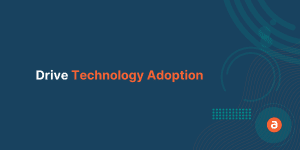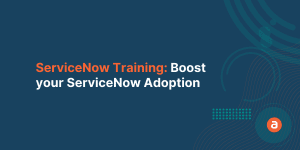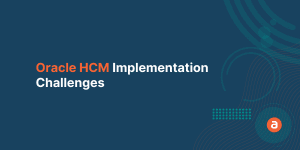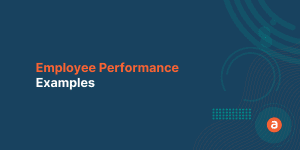Digital Transformation (DX) has changed the business landscape & there is no getting away from it. Companies that are born digital have a considerable advantage over the other mature companies who haven’t entered the door of digital.
Fail to embrace the transformation & there is every chance that your business faces the threat of fading away, in the long-term.
According to forbes.com, Digitally mature companies are 23% more profitable than their less mature peers. 56% of CEOs say digital improvements have led to increased revenue. These statistics reveal the importance & urgency of Digital Transformation.
If you don’t have any DX plan in place or planned to initiate one, then have a look at some of the best examples of Digital Transformation & learn how do they keep their competitiveness in the global market.
It is, therefore, necessary for you to explore how the giant & well-established companies apply their Digital Transformation strategies to achieve their business goals.
In this article, we’ll be looking into some of the best Digital Transformation examples that might help you to understand all about DX and how they embrace the latest technology to achieve business goals.
Digital Transformation Examples
The following are the Top Companies that can serve as Digital Transformation Examples for every business:
- IKEA
- Nike
- Microsoft
- Best Buy
- Caterpillar
- DHL
- The Home Depot
- Domino’s Pizza
Digital Transformation Success: Real Word Examples
Many companies are struggling with how to channel their digital ambition. But some companies stand out from the crowd & embrace the latest technologies. Let’s now take a look at the Digital Transformation success cases of such companies.
1. IKEA (since 1958)
Sector: Retail
Years to complete: 3 years
IKEA, a Swedish furniture company, is one of the best Digital Transformation (DX) examples showing how DX can transform a traditional company. IKEA’s vision is to “create a better everyday life for the many people” & it invests heavily in providing the best Customer Experience (CX).
IKEA faces a landscape of changing customer habits, some people prefer to visit an IKEA warehouse, & some prefer ordering online using the IKEA app. IKEA bought TaskRabbit which solves the assembling problem- IKEA delivers the product on the first day & assembled it by an expert the next day.
COVID-19 has grounded people all over the world, ensuring that people engage with their living spaces a lot more than before. IKEA leverages this situation to boost their sales by transforming them digitally.
To improve the customer shopping experience, the furniture giant took things to the next level. IKEA’s smart home project uses Augmented Reality which allows you to choose furniture & virtually furnish your home before making your purchase.
IKEA’s application allows you to digitally place the items that you like the most in real-time in your apartment (with the help of advanced 3D & AI technology).
Another best example of IKEA’s Digital Transformation is its Space10 project – its research & design lab. IKEA is establishing a car-free city center store, in Austria.
Interestingly, it is only reachable by public transport. IKEA’s technology-driven campaigns & sustainability-focused content series have proved it as a digitally innovative brand.
Key takeaway: The limitations caused by the pandemic forced them to think of creative solutions.
2. Nike (since 1964)
Sector: Consumer Discretionary
Years to complete: 3 years
Nike – the brand that needs no introduction – is another great example of Digital Transformation because it believed in ongoing DX to reinvent its brand & supply chain. “Digital is fueling how we create the future of retail,” said CEO John Donahoe and he added, “Nike’s digital transformation strategy is not easily replicated.”
Nike’s strategy for driving Digital Transformation stands out from the rest of its competitors. Their end-to-end consumer focus allows them to connect & recommend the right products to their customers. Nike partnered with Amazon to boost their online sales. They opened concept stores & improved the online & application experience.
Nike Fit app uses AR & AI to scan users’ feet for the perfect fit, which engages the customers and helps them to identify the right product. A major factor in Nike’s digital growth is its SNKRS app, a mobile application that provides an exclusive brand experience. SNKRS app outperformed all other channels in 2020 Q2, driving a digital growth of 38%.
Nike is also changing their customers’ journey of finding the right product & how it’s delivered. Nike’s new investments in RFID helps consumers to instantly track their products.
Nike has acquired Celect for $110 Million in 2019 for developing algorithms to clearly understand their customer preferences. Nike’s stock price is $52 in 2017 to nearly $128 within three years since the transformation began.
Key takeaway: Using tech to reinvent their customer experience helped Nike gain incredible growth.
3. Microsoft (since 1975)
Sector: Technology
Years to complete: 6 years
Microsoft Corporation, another best Digital Transformation example, is a mammoth brand in itself. With competition changing the rules of the game, thanks to names like Google, Apple, and Amazon, Microsoft has been forced to re-think its DX strategy.
When Satya Nadella became the CEO of Microsoft in the year 2014, that is when the company started its Digital Transformation journey. Microsoft focused on Cloud-networking systems, which is a game-changing transformation.
Microsoft moved its focus from being traditional software to more solid software for both personal & enterprise use. In the year 2014, the stock price of Microsoft was at $32 & now at $213.
“We’ve seen two years’ worth of DX in two months. From remote teamwork & learning to Sales & Customer Service, to critical cloud infrastructure & security – we are working alongside customers every day to help them adapt & stay open for business in a world of remote everything”
– Satya Nadella.
Nadella focuses more on the latest digital transformation trends & tries to incorporate them into Microsoft.
Many leaders have been investing in the latest tools & technology to digitally transform their company. Some of the biggest problems that businesses face right now are remote Onboarding, training, ensuring remote employee productivity, and other remote challenges.
Pro tip:
If you are trying hard to overcome similar issues like remote onboarding, training, employee productivity, etc, then the Digital Adoption Platform like Apty is the one that you must consider.
4. Best Buy (since 1996)
Sector: Consumer electronics retail industry
Years to complete: 7 years
Best Buy, a leading consumer electronics retailer, thought that Amazon will kill them until 2012. The year 2012 was a game-changer for Best Buy. It was the year they welcomed a new CEO, Hubert Joly who took many digital initiatives to improve company standards. “Our purpose is to enrich lives with the help of technology. Not to sell products to you”, says Hubert.
Since then, Best buy is not just a company that sells CDs & TVs, it uses the latest technology to enrich customer buying experience. Best Buy’s Digital Transformation journey involves price matching, delivery & the ultimate CX strategy.
In the price matching program, they provide purchasing advice to the customers (customized recommendations & assistance). They primarily focus on understanding the needs & wants rather than simply selling a product.
Best Buy set itself apart from the competitors as they never used to push strategy. Best Buy’s Geek Squad services offer a superior level of support 24/7, in-store, or even online.
Despite facing struggles initially, Best Buy has redefined itself thanks to the decisions of Hubert Joly who made them reap good benefits from their DX strategies.
Key takeaway: With effective leadership, execution, and open progressive cultures, Best Buy was able to implement Digital Transformation successfully.
5. Caterpillar
Sector: Machinery
Years to complete: 4 years
Many companies around the globe in old-line industries are now harnessing the power of new technology to embrace digital transformation. Caterpillar, the world’s leading manufacturer of various machinery.
In 2013, Caterpillar began to seriously gear up for digital transformation. Their traditional businesses and practices were on a downward curve and their competitors were already embracing DX. This is when Caterpillar’s leadership team started improving the company’s efforts around digital-centricity as a principal way to drive future growth.
The company focused on creating a long-term digital strategy to connect all of its equipment on a common platform. They also aimed at making their products smarter and helping customers improve productivity and safety.
By 2016, Caterpillar had already connected around 400,000 assets to the cloud and made sure all new machines were connected as well. The number rised to 700,000 in another 2 years.
This provided customers an easy-to-use platform that simplified the management of their assets and provided insight into its health and productivity.
Another benefit to the customers, dealers, and the company was their predictive diagnostics tool which turned the mountains of data from bulldozers and hydraulic shovels into meaningful information that can help customers catch potential maintenance issues before breakdowns occur, minimizing downtime.
Key takeaway: Caterpillar used data and the cloud to their advantage to provide a much more polished experience with their machinery.
6. DHL
Sector: Logistics & Supply Chain
Years to complete: Ongoing
DHL, the international courier, package delivery, and express mail service company, is investing over 2 billion euros on digital transformation projects from 2021 to 2025 to improve customer and employee experience, and to increase operational excellence.
In 2015, DHL successfully carried out a pilot project testing smart glasses in a warehouse in the Netherlands as the first step in their Augmented Reality journey. DHL partnered with leading wearable computing solutions expert Ubimax, used the technology to implement ‘vision picking’ in warehousing operations.
DHL used big data and predictive analysis to monitor shipment movements, flag issues in real-time, and identify alternative flight/network routes for their delivery system. They implemented AI to optimize routes and improve delivery speeds.
Key takeaway: DHL is continuously improving their DX efforts by using innovative solutions for their delivery systems
7. The Home Depot
Sector: Consumer Services
Years to complete: 2 years
In 2018, Home Depot started to transform their retail experience to focus on a digital, interconnected experience across their physical and online shopping platforms. This system was introduced to provide consumers with a frictionless, interconnected shopping experience.
Home Depot which was just a hardware store now has a robust data and IT department to drive its digital transformation initiative. The company invested more than $11 billion to improve their shopping experience and hired 1000 IT and user experience professionals.
They improved their use of data to better understand customers and to ensure that the right items are in stock without losing money on excess inventory. They also added visual and voice search to their app to give a smoother experience. Now, customers can easily find what they need with the help of the app.
Ever since they started this journey, Home Depot’s stock has improved from $135 in early 2017 to $215 today and their revenue has grown from $93.3 billion to almost $110 billion.
Key takeaway: The Home Depot combined their offline and online store and digitally transformed their user experience.
8. Domino’s Pizza
Sector: Foodservice / Consumer cyclical
Years to complete: 12 years
Back in the early 2000s, Domino’s and Pizza Hut were the biggest pizza outlets in US. However, people always preferred Pizza Hut for their excellent ambience and service. Domino’s had self-service had very few tables at their outlets and their pizzas weren’t all that great.
In 2008, Domino’s launched its Pizza Tracker technology which enabled customers to track their orders. In 2011, it launched its iPhone application that helped customers place orders on the go. In 2016, Domino’s made the first-ever drone delivery of a pizza, in New Zealand. On top of all this, their recipes were improved, ditching their 45-year-old ones.
Fast forward to 2020, Domino’s has an annual revenue of $14 billion in 2019 through its 17,020 restaurants across the world. The 11% year-over-year growth helped the company gain a net income of $400 million.
Key takeaway: For over a decade, Domino’s pizza slowly implemented their digital transformation strategy to strengthen their bond with customers and provide a seamless online experience.
Summing it up!
You might have noticed that many companies seem to have transformed or moved to the next level after a new leader came into play. There is no surprise that industry leaders and experts are who they are because they have the vision to see what others don’t.
It is, therefore, wise to take pointers from experts and leaders, while designing your company’s Digital Transformation strategy. This guide – Top influencer tips on Digital Transformation – will help you to think innovatively, overcome the challenges and transform your business to the next level.
Since many companies have shifted to remote working arrangements due to COVID, investing in digital tools that provide effective Onboarding, training, & ensures remote employee productivity.
Apty, the next-gen Digital Adoption Platform, helps you to onboard your remote employees quickly & provides effective product training, also gives you insights on where & how your employees go wrong. Transform your company digitally by leveraging the most effective & versatile tool like Apty.













